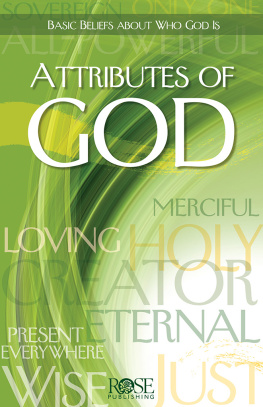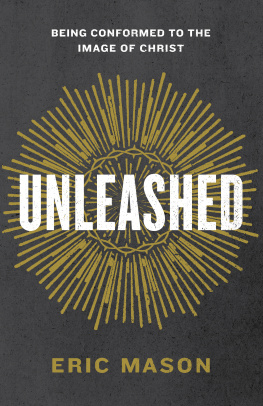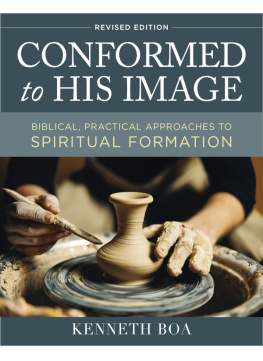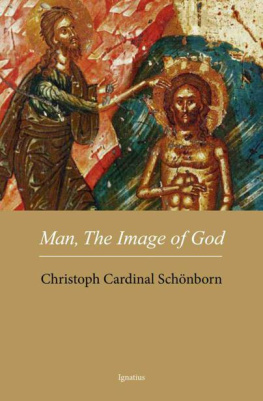Table of Contents
Landmarks
Contents
Conclusion
Render to Caesar the things that are Caesars, and to God the things that are Gods.
Mark 12:17
In the opening lines of this book, I asked you to consider that the hope of the gospel in our sanctification is not simply that we would make better choices, but that we would become better people . By asking the better question of Who should I be? we find that the will of God for our lives is not hidden. The Bible is filled with exhortations for how we can reflect our Creator as we become increasingly like Christ.
But in suggesting that we are to become better people, how do we avoid succumbing to something resembling a Christianized self-help program? How do we keep from slipping into a mind-set that accomplishes nothing more than behavior modification? Make no mistake, the Bible teaches us that behavior modification should absolutely follow
We seek to be holy as God is holy as a joyful act of gratitude. We never seek holiness as a means to earn Gods favor or to avoid his displeasure. We have his favor, and his pleasure rests upon us. The motive of sanctification is joy.
Joy is both our motive and our reward. Jesus made this connection for his disciples: If you keep my commandments, you will abide in my love, just as I have kept my Fathers commandments and abide in his love. These things I have spoken to you, that my joy may be in you, and that your joy may be full (John 15:1011).
Fullness of joy results when we seek to reflect our Maker. It is what we were created to do. It is the very will of God for our lives.
In elementary school, I shared an interest in coin collecting with my two older brothers. We assembled a modest collection of coinsa Mercury dime, some wheat pennies, an Eisenhower silver dollar, and a Morgan silver dollar from 1900 discovered forgotten in the keepsake box of an ancient family member now deceased. We were enormously proud of our coins. We kept them enshrined in a large, flat display box of cardboard with a glass lid. Little did we know the glass lid would prove more valuable than the coin collection itself.
The front door of our house contained a circular window at eye level, which was covered on the inside by a small, sheer curtain. One day while our mother was at work, we accidentally broke that window. Ill leave you to speculate on the circumstances surrounding the accident, but you should assume mischief was a factor. Fearing our mothers just displeasure, we united in a rare act of sibling solidarity: Conceal the crime and fix the window. We pooled our finances and scheduled the repair, but there would be a three-day wait before the glass could be replaced. We panicked. Three sweltering Texas summer days is too long to conceal a broken window, and Mom would be home from work soon. In a stroke of miscreant genius, we duct-taped that glass lid from the coin collection across the window, concealed behind the curtain. Mom never found out.
As a parent, now when I think of coin collecting, my first thought is never to leave my children at home unsupervised. But my second thoughtas a Bible teacheris of a story recorded for us in the Gospel of Mark.
A Story That Is Not about Taxes
In Mark 12, Jesus is asked a question regarding the paying of taxes. Two adversarial groups of Jews, the Herodians and the Pharisees, try to trap Jesus into saying that Rome is their rightful ruler. The Romans employed Jewish tax collectors to extract taxes (often unfairly) from their own people. Jesuss disciple Matthew was one such tax collector before his conversion. The subject of paying taxes to Rome was a highly flammable one, and if his enemies could get Jesus to speak in support of the system, they could easily raise a rabble against him.
With smooth talk, his Jewish adversaries pose their question: Is it lawful to pay taxes to Caesar or not? Jesus knows the question is a trap, so he responds in his typical fashion: he uses their question to answer a more important one, one that addresses not outward actions but inward motives. He asks them to bring him a denarius, the coin used to pay the tax. He then poses a question to them that is its own sort of trap:
They brought the coin, and he asked them, Whose image is this? And whose inscription?
Caesars, they replied.
Then Jesus said to them, Give back to Caesar what is Caesars and to God what is Gods.
And they were amazed at him. (Mark 12:1617 NIV)
We read this story and can tell that something in Jesuss response has derailed their entrapment in a way that leaves them amazed, and a little trapped themselves, though it is not immediately clear to our modern ears how he has done so. But a little insight from the average coin collector can help us piece together what transpired.
The coin shown to Jesus is most likely a denarius of the Emperor Tiberius. Two thousand years later, these coins still exist. You could purchase one right now on eBay for about eight hundred dollars. Coins minted during the reign of a particular emperor were stamped with a picture of his face and an inscription. The inscription circling the face of Tiberius reads, Caesar Augustus Tiberius, son of the Divine Augustus, reinforcing the common claim that the Caesars themselves were gods. Tiberiuss father, Augustus, had been worshiped as a god throughout the Roman Empire during his lifetime, and the inscription attempts to elevate Tiberius to the same status.
When Jesus responds to his adversaries, he doesnt really talk about taxes at all. Instead he talks about the coin itself; he talks about image bearing. He says, in effect, The coin is engraved with the image of a god, marking what belongs to him. You, on the other hand, are engraved with the image of God himself, marking what belongs to him. Will you concern yourself with earthly obligations to the neglect of the heavenly ones required by the image engraved in you?
You bear the very marks of the Creator. Render unto God what is Gods.
The Jewish leaders of Jesuss day showed more concern for who ruled earthly kingdoms than for who ruled the kingdom of heaven. In the process, they rendered service to false gods. We can be guilty of doing the same. We are always looking to fashion an idol.
Inadequate Idols
When God gives the Law to Moses at Mount Sinai, he gives a set of ten commandments. Eight of them are briefly stated, but two of them are expressed at some length. The longest is the fourth command, to remember the Sabbath and keep it holy. The next longest, only slightly shorter in length, is the second command:
You shall not make for yourself a carved image, or any likeness of anything that is in heaven above, or that is in the earth beneath, or that is in the water under the earth. You shall not bow down to them or serve them, for I the Lord your God am a jealous God, visiting the iniquity of the fathers on the children to the third and the fourth generation of those who hate me, but showing steadfast love to thousands of those who love me and keep my commandments. (Ex. 20:46)
Though only the fourth command explicitly states the idea of remembering, the extended length of both the fourth and the second command points to the idea in both. When I wanted my small children to follow instructions, I always devoted more explanation to the parts that were the least likely to be remembered, understood, or obeyed. So also, God gives extra words where extra emphasis is needed.
We need an extra-firm reminder about the second command concerning idols. In one sense, it is an extension of the first command to have no other gods before God, but it carries more specificity. The term carved image is variously translated image, graven image, or idol. We read the second command and recognize that God does not want us to take inanimate materials and form them into an image that we then worship. Simple enough, we think, trying hard not to notice how closely our phones, our cars, or our bank statements resemble that description.















